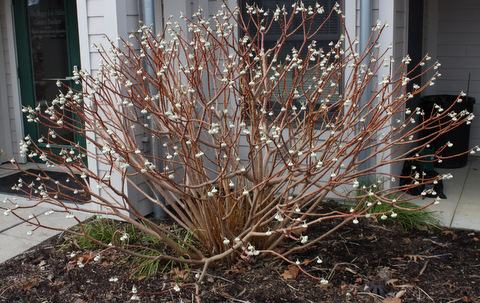
One of the hallmarks of science is that our view of the world evolves and changes as new evidence comes to light. When I was a grade-schooler following the Apollo missions, for example, I knew all the planets in order from Mercury to Pluto and how many moons each one had; Jupiter was the champ with 12. Today, Jupiter has as many as 63 moons depending on who’s counting. And Pluto, let’s not even go there. Likewise, our view of plant science has changed over the years. As I’ve mentioned before, when I took introductory Botany as an undergrad thirty-some years ago we learned that there were 16 essential plant nutrient elements. Since then we’ve learned that nickel is also essential at least for some plants.
If you took your plant science more than 10 years ago, you also learned that nitrogen is taken up from the soil as either ammonium or nitrate. This view is now being revised due largely to evidence from the ecological literature. Ecologists have found that in northern boreal regions where soil temperatures are cold and mineralization and nitrification rates are low, plants will take up intact amino acids from the soil (Nashholm and Persson, 2001; Kielland et al., 2006). Recent studies have extended these observations to temperate forests (Gallet-Budynek et al., 2009) and horticultural crops. (Ge et al., 2009), indicating that a range of plants may be able to derive a portion of their N requirements directly from organic sources.
So what does this have to do with the Garden Professors and the science of landscape horticulture? First off, this is pretty cool stuff and certainly will cause a lot of re-evaluation of some established paradigms. From an applied perspective, fertilizing with amino acids and related organic source has some potential benefits. In warm, well-aerated soils, nitrate-N predominates. When plants take up nitrate, it must be reduced via nitrate reductase and nitrite reductase before it can be assimilated into amino acids. These steps require metabolic energy. In theory, amino acids could bypass the reduction and assimilation processes and provide a more efficient means of fertilization. At this point, most of the scientific focus is on quantifying how much organic N can be directly taken up from the soil. Evaluating efficiency of uptake and utilization is a couple steps down the road. Amino acid fertilization could potentially provide another benefit over nitrate fertilization by reducing nitrate leaching.
Of course there’s a potential downside as well. A quick Google search of ‘amino acid fertilizer’ reveals sites shilling all manner of concoctions for fertilizing plants; many of dubious value. One of the first sites I hit proclaims that, unlike inorganic fertilizers, their product provides the 70 elements needed for plant growth. Seventy?! Well that’s close to seventeen. Point is be prepared for an ever increasing barrage of claims about organic fertilizers. There is no doubt that compost and similar organic sources can provide essential plant nutrients and effective fertilizer sources. As always, however, be skeptical of spectacular claims and secret, proprietary ingredients and pay close attention to the cost of amino acids compared to conventional fertilizers. There is some science here; clearly many plants have the capacity to take up amino acids directly. Beyond that we’ve still got a lot to learn.
Gallet-Budynek, A., E. Brzostek, V.L. Rodgers, J.M. Talbot, S. Hyzy, and A.C. Finzi. 2009. Intact amino acid uptake by northern hardwood and conifer trees. Oecologia 160:129–138.
Ge, T., S. Song, P. Roberts, D.L. Jones, D. Huang, and K. Iwasaki. 2009. Amino acids as a nitrogen source for tomato seedlings: The use of dual-labeled (13C, 15N) glycine to test for direct uptake by tomato seedlings. Environmental and Experimental Botany. Volume 66: 357-361.
Kielland K, J. McFarland, and K. Olson. 2006. Amino acid uptake in deciduous and coniferous taiga ecosystems. Plant Soil 288:297–307.
T. Näsholm and J. Persson. 2001. Plant acquisition of organic nitrogen in boreal forests, Physiol. Plant 111: 419–426.















